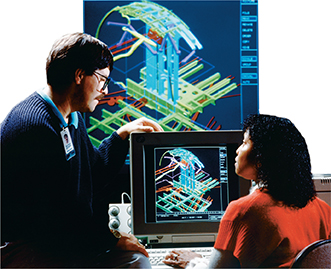Figure 9 Two engineers discuss a computer-aided design, or CAD, of an aircraft component.

Scientific Models
If you have ever been lost in a city, you know that a street map can help you find your location. A street map is a type of model, or representation, of an object or event.  Scientific models make it easier to understand things that might be too difficult to observe directly. For example, to understand how Earth rotates on its axis, you could look at a globe, which is a small-scale model of Earth. The computer model in Figure 9 represents the interior of an airplane. Other models help you visualize things that are too small to see, such as atoms. As long as a model lets you mentally picture what is supposed to be represented, then the model has done its job.
Scientific models make it easier to understand things that might be too difficult to observe directly. For example, to understand how Earth rotates on its axis, you could look at a globe, which is a small-scale model of Earth. The computer model in Figure 9 represents the interior of an airplane. Other models help you visualize things that are too small to see, such as atoms. As long as a model lets you mentally picture what is supposed to be represented, then the model has done its job.
An example of a mental, rather than physical, model might be that comets are like giant snowballs, primarily made of ice. Scientists tested this model with observations and experiments. In 2006, a space probe collected samples from a comet. Tests on the samples confirmed that comets are made of ice, but the tests also showed that comets contain rocky material that is formed near the sun. So, a modified model of comets was adopted.
If new data show that a model is wrong, then it must either be changed or be replaced by a new model. If scientists never challenged old models, then nothing new would be learned, and we would still believe what we believed hundreds of years ago. Science works by making mistakes. The fact that newer models are continually replacing old models is a sign that new discoveries are continually occurring. As the knowledge that makes up science keeps changing, scientists develop a better and better understanding of the universe.
What is a model?





